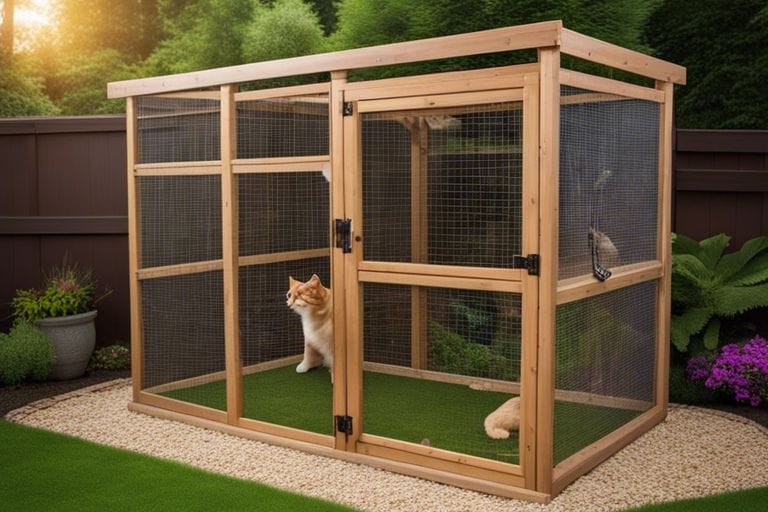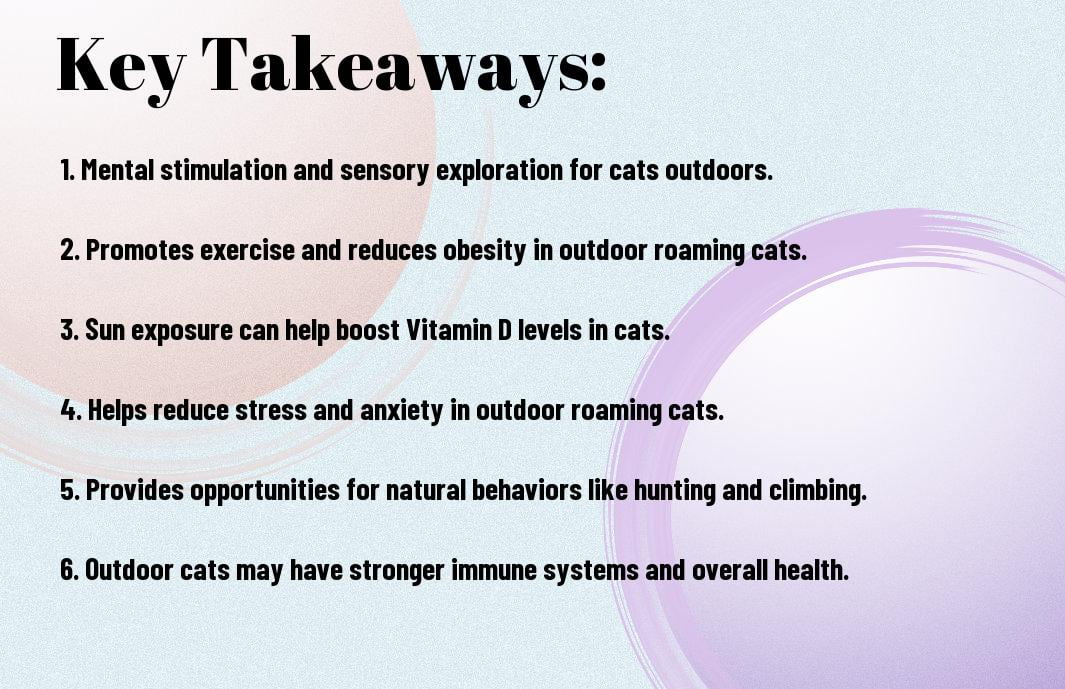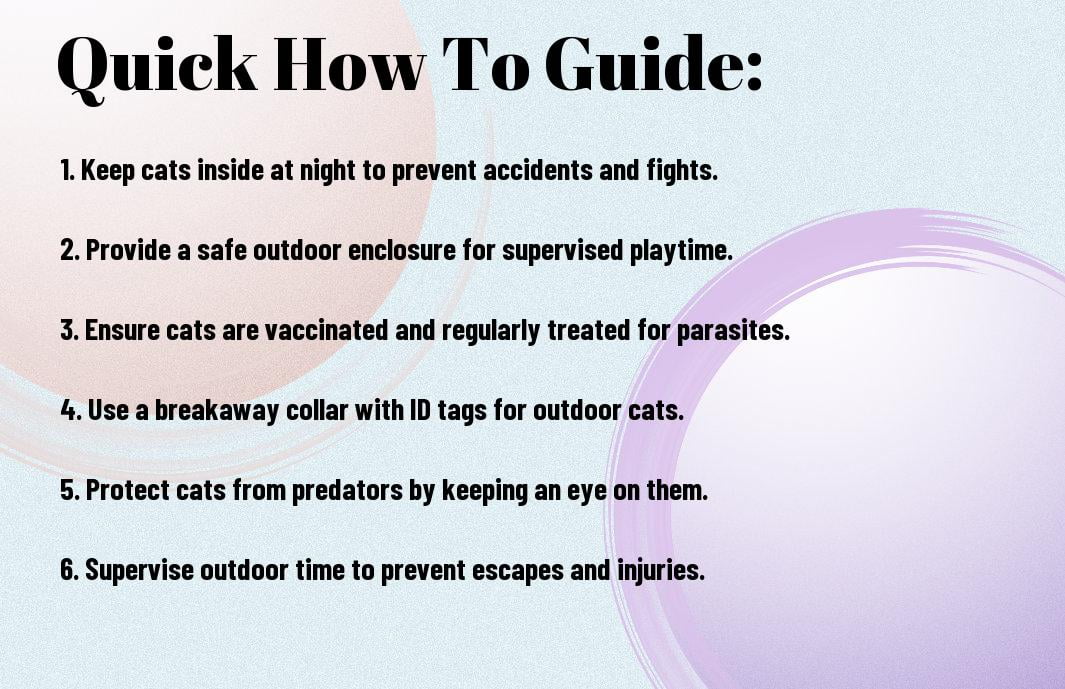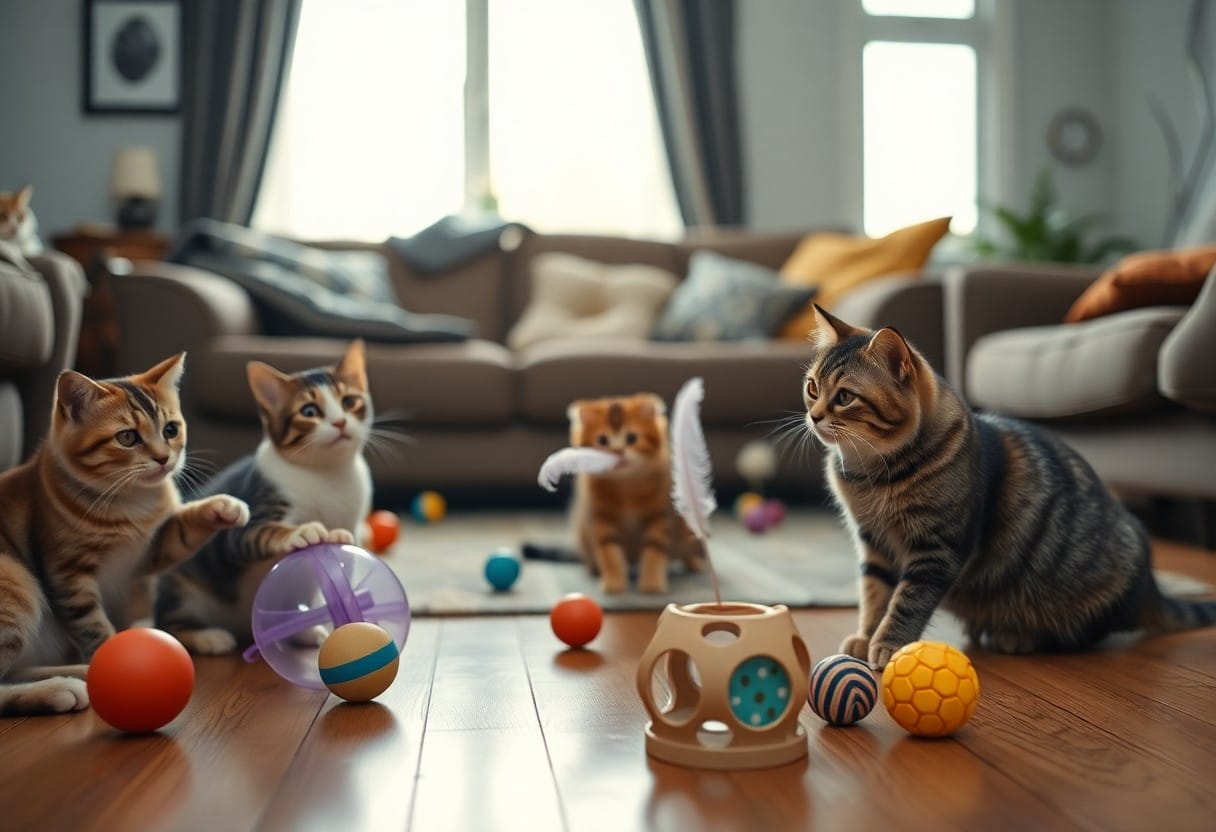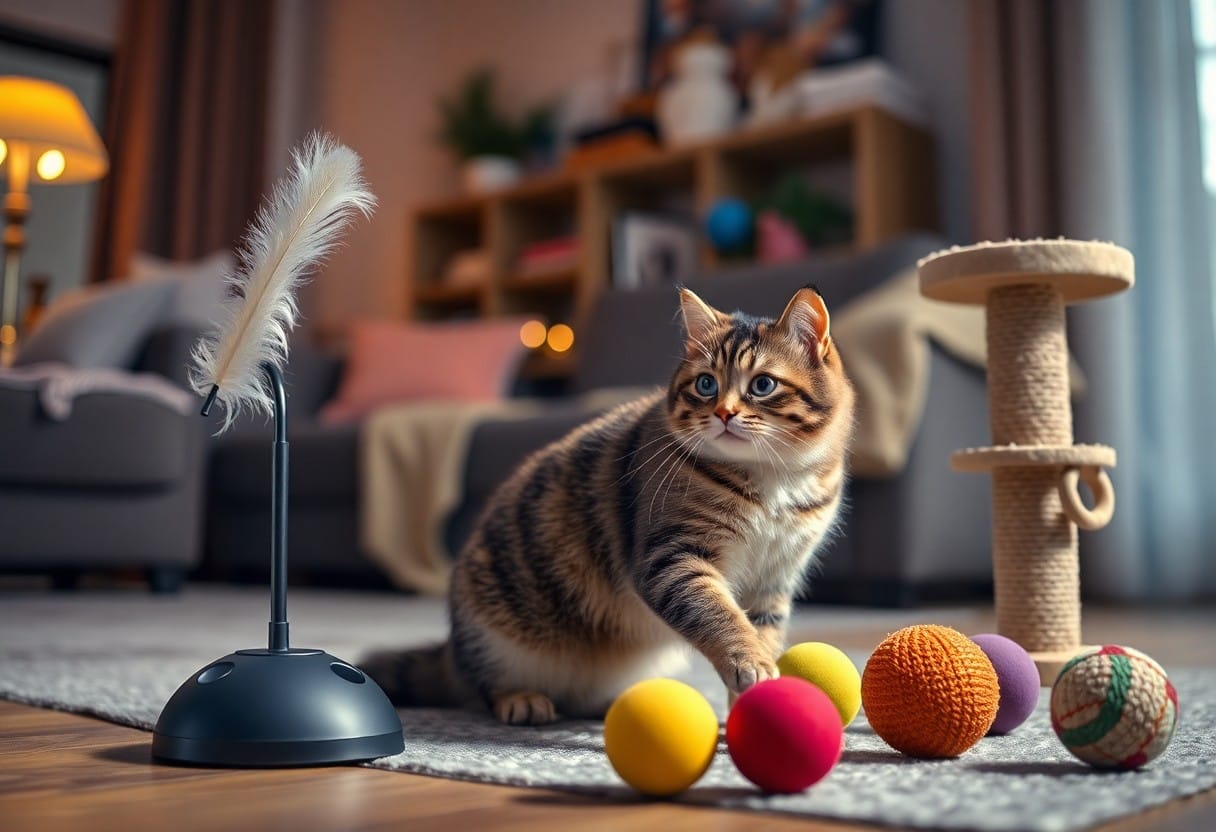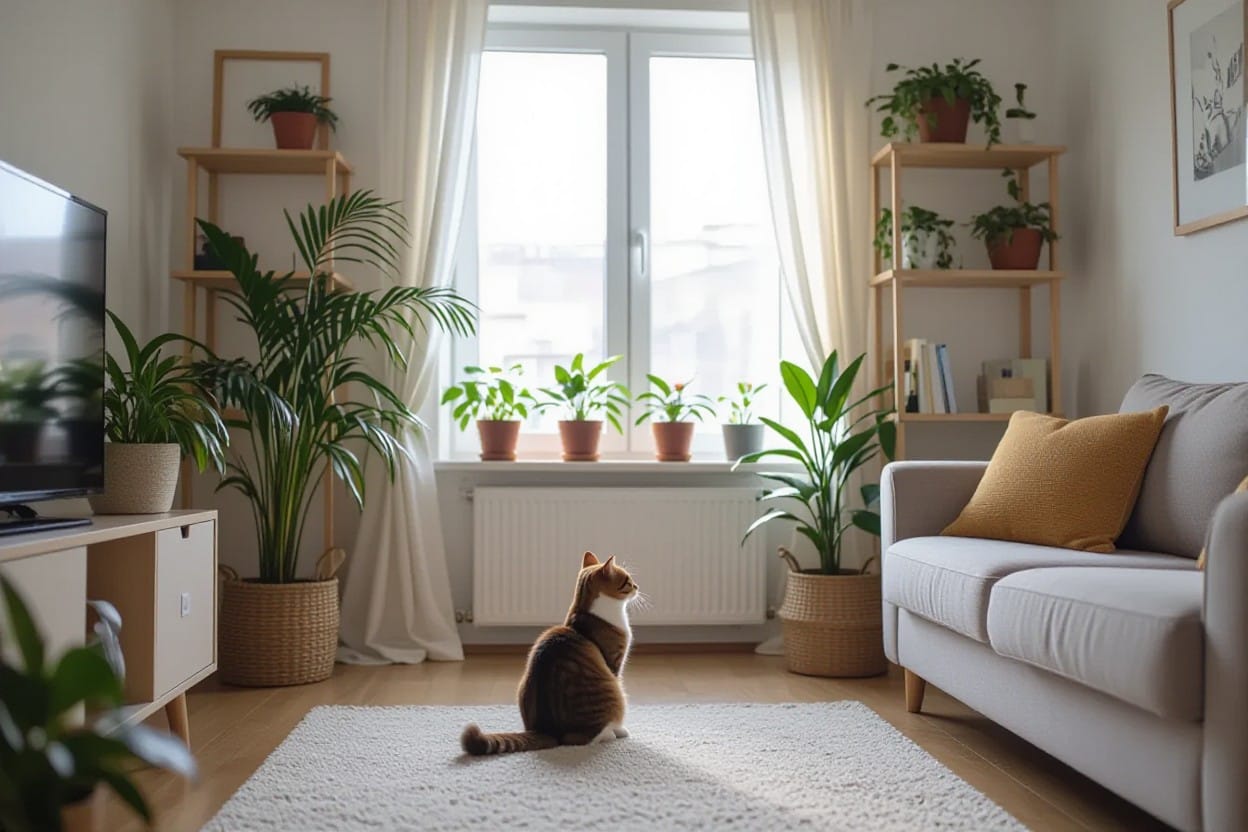Keeping your outdoor cats safe is a top priority for any pet owner. With so many potential dangers lurking outside, it’s important to take proactive steps to ensure your feline friends are protected. This comprehensive guide will provide you with all the information you need to create a safe and secure environment for your outdoor cats, allowing them to enjoy the great outdoors while staying out of harm’s way.
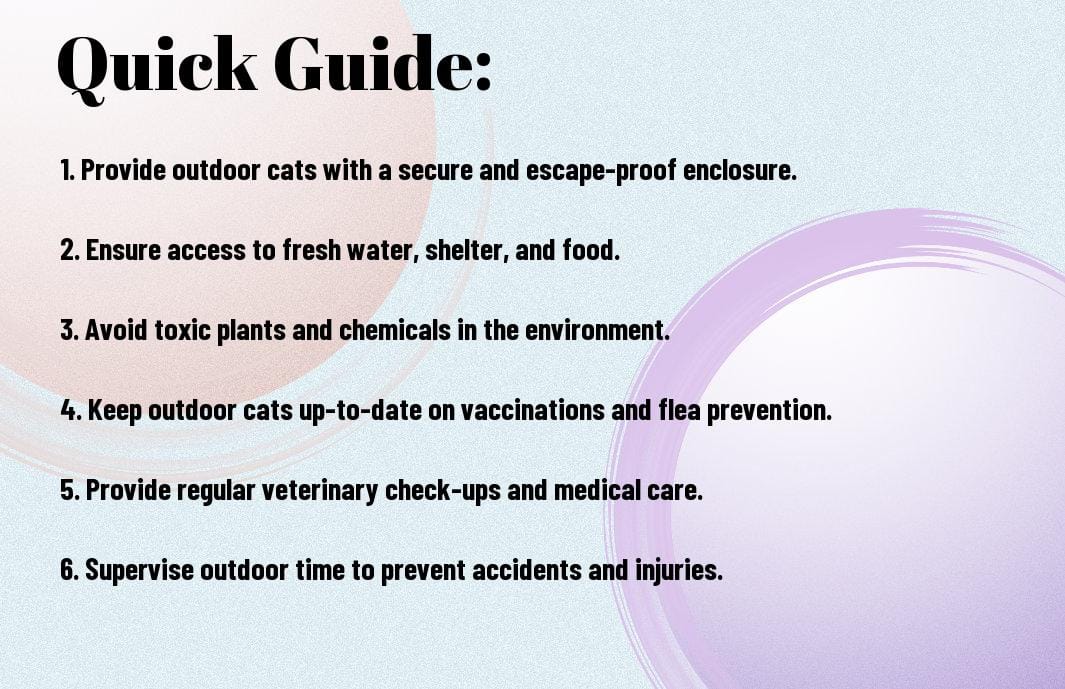

Types of Outdoor Environments for Cats
Some outdoor environments are more suitable for cats than others. It is important for cat owners to consider the type of outdoor space they have and how to make it safe for their fur babies. Recognizing the different types of outdoor environments can help owners tailor their efforts to keep their cats safe.
| Urban Settings | Rural Settings |
| Busy streets and high-rise buildings pose risks | Open spaces and wildlife may present dangers |
| Limited access to green spaces | More opportunities for hunting and exploring |
| Noisy environments and potential pollution | Potential exposure to pesticides and toxins |
| Higher likelihood of encounters with other animals | Less human-made hazards, but more natural threats |
Urban vs. Rural Settings: Factors to Consider
If you are considering allowing your cat outdoor access, it is necessary to weigh the pros and cons of urban versus rural settings. After all, the environment in which your cat roams will significantly impact their safety and well-being.
- Urban settings may have more human-made hazards, such as traffic and pollution.
- Rural settings may expose cats to more natural threats, like predators and toxins.
- After considering these factors, you can make an informed decision about the best outdoor environment for your cat.
Secure Catios and Enclosures
Secure catios and enclosures are a popular choice for cat owners looking to provide their feline friends with safe outdoor access. Catios are enclosed outdoor spaces that allow cats to experience the sights, sounds, and smells of the outdoors without the risks associated with roaming freely.
Catios come in all shapes and sizes, from small window boxes to large outdoor enclosures with multiple levels. These secure spaces provide enrichment for cats while keeping them safe from potential dangers like traffic, predators, and toxins.
Exploring Supervised Access: Leashes and Harnesses
Any cat owner can explore the option of supervised outdoor access using leashes and harnesses. This method allows cats to experience the outdoors under close supervision, ensuring their safety at all times.
Settings
Preparing Your Cat for the Outdoors
Essential Vaccinations and Health Checks
Some of the most important steps in preparing your cat for outdoor adventures involve ensuring they are up to date on imperative vaccinations and health checks. Before allowing your cat outdoors, it’s crucial to consult with your veterinarian to make sure your furry friend is protected against common diseases and parasites.
Regular health checks are vital to catch any potential issues early on and keep your cat in the best possible condition for outdoor exploration. Vaccinations like rabies, feline leukemia, and distemper are imperative to protect your cat from serious illnesses that they could encounter outside.
Training Your Cat for Outdoor Adventures
Preparing your cat for outdoor adventures involves training them to be comfortable and safe when exploring outside. To successfully transition your indoor cat to an outdoor lifestyle, gradual training is key. Start by introducing your cat to a harness and leash indoors, allowing them to get used to wearing it before venturing outside.
Essential commands like “come” and “stay” can also be beneficial in keeping your cat safe during outdoor excursions. Remember to be patient and consistent with your training efforts to ensure a positive outdoor experience for both you and your cat.
Identification Methods: Microchips and Collars
Now, more than ever, identification methods like microchips and collars are imperative for outdoor cats. Microchipping your cat provides a permanent form of identification that can be crucial in reuniting you with your pet if they ever get lost. Collars with ID tags containing your contact information are also important in case your cat wanders too far from home.
Vaccinations are not only important for your cat’s health but also for the safety of other animals they may come into contact with outdoors. By keeping your cat up to date on vaccinations, you are not only protecting them but also contributing to the overall well-being of the outdoor cat community.
Step-By-Step Guide to Creating a Safe Outdoor Space
Unlike indoor cats, outdoor cats face a variety of potential dangers and hazards. To ensure your feline friend stays safe while enjoying the outdoors, it’s necessary to create a secure and cat-friendly outdoor space. This guide will walk you through the step-by-step process of creating a safe outdoor environment for your beloved pet.
| Assessing Your Yard for Potential Hazards | Fortifying Fences and Creating Cat-Friendly Zones |
Assessing Your Yard for Potential Hazards
Little changes in your yard can make a big difference in your cat’s safety. Start by inspecting your outdoor space for any potential hazards such as toxic plants, sharp objects, or small spaces where your cat could get stuck. Remove any toxic plants and ensure there are no openings where your cat could escape or get trapped.
Fortifying Fences and Creating Cat-Friendly Zones
Hazards such as busy roads, aggressive animals, and potential predators can pose a threat to your outdoor cat. Fortify the boundaries of your outdoor space by installing cat-proof fencing or barriers to prevent your cat from venturing into unsafe areas. Create cat-friendly zones within your yard where your cat can play, explore, and relax safely.
Understanding your cat’s needs and behaviors is necessary when creating a safe outdoor space. Cats are curious creatures that love to climb, explore, and nap in sunny spots. By providing secure climbing structures, hiding spots, and comfortable resting areas, you can enrich your outdoor space and keep your cat entertained and engaged while ensuring their safety.
Implementing Natural Deterrents for Predators
Some natural deterrents can help keep predators away from your outdoor cat. Planting strong-smelling herbs like lavender or rosemary, or installing motion-activated lights or sprinklers can deter predators such as coyotes or birds of prey. These natural deterrents can add an extra layer of protection to your outdoor cat’s safe space.
Creating a safe outdoor space for your cat requires careful planning and attention to detail. By assessing potential hazards, fortifying fences, understanding your cat’s needs, and implementing natural deterrents, you can create a secure and enriching outdoor environment where your cat can safely enjoy the great outdoors.
Behavioral Tips for Safeguarding Outdoor Cats
Understanding Feline Communication and Signs of Distress
For outdoor cat owners, understanding feline communication and signs of distress can play a crucial role in keeping your beloved pet safe. Cats have their unique ways of communicating with gestures, vocalizations, and body language. Recognizing your cat’s normal behavior patterns and mannerisms can help you identify when something is amiss.
- Pay attention to changes in your cat’s behavior or routines, such as decreased appetite, excessive grooming, or hiding away.
- Learn the different vocal cues your cat uses to express fear, pain, or discomfort.
- Watch for signs of aggression or fear towards other animals or individuals in the environment.
Knowing how to interpret your cat’s signals can help you intervene early and prevent potential dangers they may encounter outdoors.
Setting Boundaries and Curfews
Communication is key when setting boundaries and curfews for outdoor cats. It’s important to establish clear rules and consistently reinforce them through positive reinforcement and training. Make sure your cat knows where they are allowed to roam and when they should come back inside. Regularly communicate these boundaries through verbal commands, gestures, and rewards for good behavior.
It is crucial to set curfews to ensure your cat’s safety, especially during the night when visibility is poor, and dangers may be lurking. Establishing a routine for your cat to come indoors before dark can help reduce the risk of potential accidents or encounters with wildlife.
Encouraging Safe Exploration Habits
There’s no denying that cats are natural explorers, but it’s important to encourage safe exploration habits for outdoor cats. Provide a stimulating environment in your outdoor space with hiding spots, climbing structures, and safe plants for them to investigate. Additionally, consider installing a catio or enclosed area where your cat can enjoy the outdoors safely.
Understanding your cat’s curiosity and need for mental stimulation can help you create a secure and enriching environment for them to explore without putting their safety at risk.
Pros and Cons of Various Safety Measures
| Safety Measure | Pros and Cons |
| Physical Barriers | Provide a visible boundary for cats but can be costly to install and maintain. |
| Electronic Tracking Devices | Offer real-time monitoring of your cat’s whereabouts but may have limitations in certain terrains. |
| Diet and Nutrition | Can improve overall health and immunity of outdoor cats but may require a transition period for dietary changes. |
Physical Barriers: Walls vs. Invisible Fences
There’s a lot to consider when choosing between physical barriers like walls and invisible fences to keep your outdoor cats safe. Walls offer a solid deterrent that is visible and can prevent cats from wandering off. However, they can be expensive to build and maintain. On the other hand, invisible fences provide a more discreet option but require training for your cat to learn the boundaries.
Electronic Tracking Devices: GPS Collars and Radio-Frequency ID
Measures such as GPS collars and radio-frequency ID devices have revolutionized the way we monitor our outdoor cats. GPS collars offer real-time tracking of your cat’s location, while RFID tags can help in identification if your cat gets lost. However, GPS collars can be bulky and have limitations in areas with poor satellite reception, while RFID tags require a scanner to access the information.
Devices such as GPS collars and radio-frequency ID tags have become necessary tools in ensuring the safety of outdoor cats. With advances in technology, pet owners now have the means to keep track of their cats’ whereabouts and quickly locate them in case they go missing. While these devices can be incredibly useful, it’s important to choose one that suits your cat’s lifestyle and comfort level.
The Role of Diet and Nutrition in Outdoor Safety
The diet and nutrition of outdoor cats play a crucial role in their overall well-being and safety. A balanced diet can help improve their immune system, making them less susceptible to diseases and infections. Additionally, proper nutrition can provide outdoor cats with the energy and nutrients they need to navigate their outdoor environment effectively.
Nutrition is key when it comes to keeping your outdoor cats safe and healthy. By feeding them a high-quality diet that meets their nutritional requirements, you can ensure that they have the strength and vitality to explore their outdoor surroundings with confidence.

Advanced Strategies for Outdoor Cat Safety
Once again, when it comes to ensuring the safety of your outdoor cats, it’s necessary to go above and beyond basic measures. By implementing advanced strategies, you can provide your feline friends with a higher level of protection and security. Here are some advanced tactics you can consider:
- Integrating Indoor and Outdoor Environments
Indoor Cat Enrichment Outdoor Cat Enclosures Incorporate climbing trees, scratching posts, and interactive toys indoors to keep your cat stimulated. Provide secure enclosures in your yard or balcony that allow your cat to experience the outdoors safely. - Utilizing Technological Solutions for Monitoring
GPS Tracking Collars Wi-Fi Enabled Cameras Equip your cat with a GPS tracking collar to monitor their whereabouts in real-time. Install cameras around your property that can be accessed remotely to keep an eye on your cat when outdoors.
Integrating Indoor and Outdoor Environments
Some cat owners opt to integrate their indoor and outdoor spaces to provide their cats with the best of both worlds. By creating a safe outdoor enclosure or cat-proofed yard, you can allow your feline companions to experience fresh air and sunshine without exposing them to potential dangers like traffic or wildlife.
Utilizing Technological Solutions for Monitoring
Little by little, technology is becoming a valuable tool in ensuring the safety of outdoor cats. GPS tracking collars can give pet owners peace of mind by allowing them to pinpoint their cat’s location at any given time. Additionally, Wi-Fi enabled cameras enable real-time monitoring of your cat’s outdoor activities, providing an extra layer of security.
Community Awareness and Sharing Safety Tips with Neighbors
Outdoor cats can benefit greatly from a community that is aware of their presence and committed to their safety. By sharing safety tips with neighbors and promoting responsible pet ownership, you can create a network of support that looks out for the well-being of all cats in the neighborhood.
- Organize neighborhood meetings or online groups to discuss outdoor cat safety and share valuable information.
- Recognizing common hazards and alerting neighbors to potential risks can help create a safer environment for all outdoor cats.
Advanced strategies for outdoor cat safety involve a combination of proactive measures and community involvement. By integrating indoor and outdoor environments, utilizing technological solutions for monitoring, and fostering community awareness, you can create a safer outdoor environment for your beloved feline companions.
Conclusion
As a reminder, keeping your outdoor cats safe requires a combination of awareness, precaution, and proactive measures. By following the tips outlined in this guide, you can create a safe and stimulating outdoor environment for your feline companions while minimizing potential risks to their health and well-being.
Recall, the safety of your outdoor cats is your responsibility as their caregiver. By staying informed, investing in proper equipment, and regularly assessing the risks in your cat’s outdoor environment, you can ensure that your furry friends can enjoy the great outdoors safely and happily.
FAQ
Q: Why is it important to keep outdoor cats safe?
A: It is important to keep outdoor cats safe to protect them from potential dangers such as predators, traffic accidents, and exposure to disease.
Q: What steps can I take to keep my outdoor cat safe?
A: To keep your outdoor cat safe, ensure they have proper identification, provide shelter, access to fresh water and food, and regular veterinary care.
Q: How can I protect my outdoor cat from predators?
A: To protect your outdoor cat from predators, you can install motion-activated lights, secure outdoor enclosures, and keep your cat indoors during dusk and dawn when predators are most active.
Q: How do I prevent my outdoor cat from getting lost?
A: To prevent your outdoor cat from getting lost, consider microchipping your cat, keeping them indoors during severe weather, and providing a safe outdoor enclosure.
Q: What should I do if my outdoor cat gets injured?
A: If your outdoor cat gets injured, seek veterinary care immediately. Keep a pet first aid kit handy and know basic first aid procedures to help your cat until you can get them to a vet.
